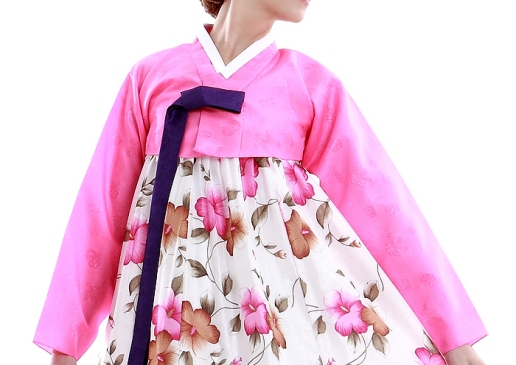Hello everyone! I am Dohoon Lee, and today I want to talk about the Korean traditional clothes. The reason why I chose to introduce my country’s traditional dress before anything else to you guys is perhaps due to the lasting impression that India had on me for the first month of my life in India. What I found extremely fascinating and captivating during that time was the ease with which people wear their traditional clothes! From kurta pyjamas to sarees that even exposed one’s back and belly, it all came as a shock to the 11-year-old boy who had just come from a country where people barely take out their traditional dress from their wardrobe except for when it is the New Year’s Day or Chuseok. For the last five years that I have been in this country, I have been enlightened by the beauty of kurtas and sarees, and today I wish to do the same to you with our traditional dress, Hanbok.
The History of Hanbok
The origin of Hanbok traces back to the nomadic Scytho-Siberian culture. Coming from a nomadic culture, the unique design of Hanbok allowed ease of movement and also included some shamanistic (spiritual) motifs. The earliest evidence of Hanbok can be found in a mural from the Goguryeo dynasty from 3rd Century BCE, the era of the Three Kingdoms of Korea (Goguryeo, Baekje and Shilla), which is when the main features such as jeogori-jacket, baji-pants and chima-skirt were established. These features have remained almost the same to this day.
Although Hanbok has been worn on the Korean peninsula for millennia, the form of Hanbok that is most widely known throughout the world is that of the Joseon dynasty, which ruled from 1392 to 1897. While the men’s Hanbok did not change a lot, the women’s Hanbok did undergo drastic changes in terms of design.

Starting from the 16th Century, the length of woman’s jeogori began to shorten, starting at 77cm, reaching 21.5cm by the end of 19th Century. The chima (skirt) also adopted greater volume, leading to a A-shaped silhouette – which is quite contrasting compared to that of the Goryeo dynasty when the fashion trend was to shorten the length of chima.
The Beauty of Hanbok
Hanbok is beautiful – hands down. I am saying this not only because it represents my culture, but also because it simply aesthetically is. (Please understand if I sound bragging. It is just that I am passionate about it 🙂 ) We define its beauty in 3 aspects:

1. The beauty of simplicity
- Simplicity is perhaps what makes Hanbok a unique attire. The combination of short-cropped jeogori and voluminous chima possess a sense of elegance that cannot be achieved by any other style of clothing. Furthermore, in contrast to European clothing where numerous fabrics and different stitching techniques distinguish each attire, most Hanbok are made with straight fabric, put in linear design. Hence, the dimensionality of the attire only comes to life when it is worn by the person. This truly makes the clothing become a part of the person’s identity.
2. The beauty of harmony
- The lines of Hanbok are straight, yet beautifully curved – whose harmony gives it an air of grace that is uniquely Korean. The harmony of colours is also significant in Hanbok. It follows the ‘theory of five colours’ (“Obangsaek” in Korean) which are related to cardinal directions as well as the five elements of traditional Korean culture.

3. Beauty of nature
- Perhaps the most notable feature of Hanbok is the feel of nature that is brought out by the irregularity of proportion when worn and the loose and voluminous shape. This gives the clothing an edge that is devoid of artificiality, making it look more authentic as well as highlighting the fabric. This could be contrasted by the Western clothing where specific stitch works are done to create a desired shape.
Hanbok in today’s world
Despite the beauty and the history behind the attire, due to the rapid inflow of western culture as well as the inconvenience of wearing a more complex attire, our Hanbok has slowly faded away from our daily life – to the level that we only wear it on holidays such as New Year’s Day and Chuseok. On a personal note, this is a trend that I feel bad about. Hanbok is an integral part of what makes Korea different, just like all traditional clothes do, and hence I believe that it should be revived.
In response to the fading away of our traditional clothes, the government is trying to encourage the people to not let go of their traditions by:
- Granting free entry into the Royal Palace of Joseon Dynasty (Gyeongbokgung)
- Popularising Jeonju – the city of traditions – to provide an environment where wearing Hanbok feels natural.
- Subsidising designers who are coming up with modern Hanbok which are both comfortable enough to be worn in daily life, and extremely stylish.
Bibliography
http://www.antiquealive.com/Blogs/Hanbok_Traditional_Korean_Clothing.html
https://www.pinterest.com/karinahope/korean-hanbok/
https://frostwinter222.wordpress.com/2015/01/24/do-you-know-hanbok/
https://en.wikipedia.org/wiki/Complex_of_Goguryeo_Tombs#/media/File:Goguryeo_tomb_mural.jpg
https://en.wikipedia.org/wiki/Hanbok
https://www.gastrotourseoul.com/the-five-colors-of-korea-what-do-you-know-about-o-bang-saek/
http://mobile.galleria.co.kr/item/showItemDtl.do?item_id=4431662#
Thank you.









